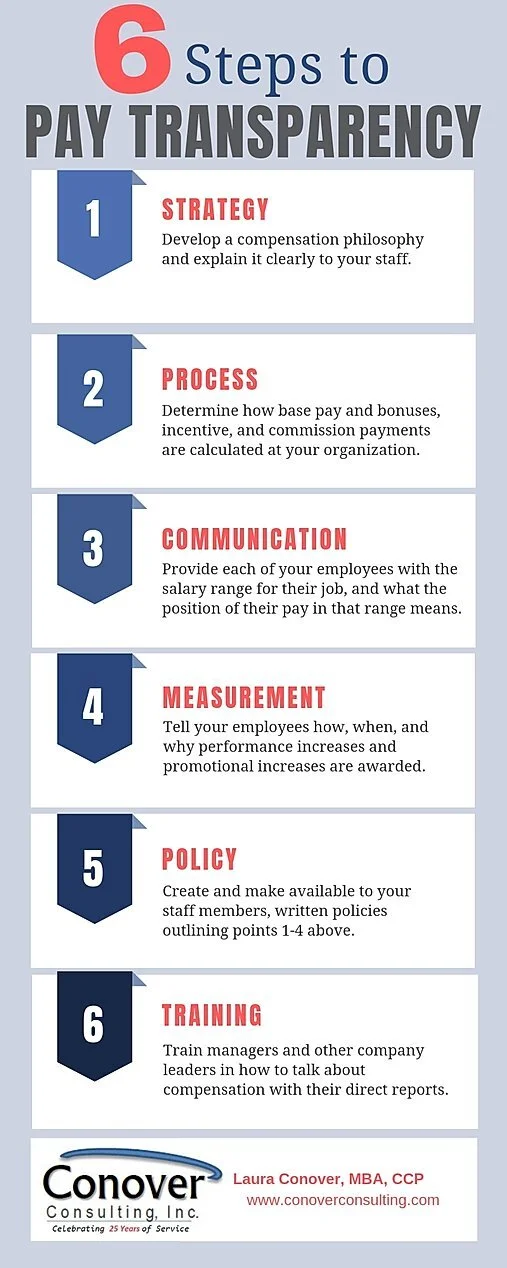6 Pay Transparency Steps Every Manager Needs to Take
Companies can be transparent about many things when it comes to their employees, but compensation isn’t always a comfortable topic for either employer or employee. One of the buzz phrases in compensation circles today is “Pay Transparency.” Is being open and honest about employee compensation a way to build morale or cause it to spiral into resentment and job dissatisfaction?
How to be transparent with employee wages
Pay Transparency can, but does not have to, mean sharing pay levels of employees within an organization. It means explaining to employees how their pay is determined. We know from plenty of research that when employees know how their base salary and variable pay is determined, they feel it is fairer than when pay levels have no structure to them. For instance, discretionary annual cash bonuses return very little, if any, ROI to the bottom line of organizations which pay them because employees have no idea why they received the bonus. Employees are receiving no signals from their employer regarding what they should do in the future to earn another bonus when the last one was discretionary.
It pays to be transparent
Some survey data around pay transparency indicates both good news and bad news. If you choose to be transparent, you could indeed improve or hurt employee engagement depending on how you go about it. Note these facts:
Employees who understand how their base and variable pay is determined are three times more engaged than those who don’t know where the numbers come from.
A May 2018 Payscale survey indicates 70% of surveyed organizations indicated their managers are not trained properly to discuss compensation.
So the moral to the story is it pays to be transparent, but pays higher dividends when your management teams have the skills to discuss pay levels and overall compensation with employees.
Here are 6 steps to take to support Pay Transparency in your company:
Strategy - Develop a compensation philosophy and explain it clearly to your staff.
Process - Determine how base pay and bonuses, incentive, and commission payments are calculated at your organization, including an explanation of the data relied upon to make such decisions.
Communication - Provide each of your employees with the salary range for their job, and what the position of their pay in that range means.
Measurement - Tell your employees how, when, and why performance increases and promotional increases are awarded.
Policy - Create and make available to your staff members, written policies outlining points 1-4 above.
Train - Train managers and other company leaders in how to talk about compensation with their direct reports.
Do You Want to Build More Engaged Employees through Pay Transparency? Let Conover Consulting help you determine pay structures, philosophies, and manager training for your company or non-profit organization. And while we are working with your leadership to better communicate compensation, perhaps other leadership skill development is in order. Take our leadership assessment and contact us.

